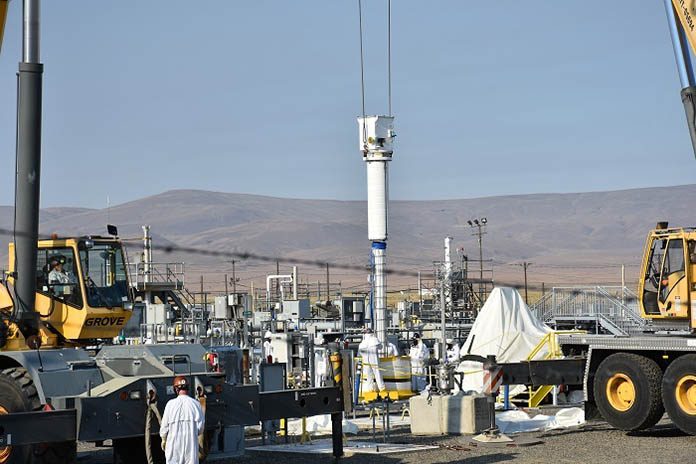
Hanford Site workers are installing equipment to demonstrate how an alternative treatment technology could safely accelerate cleanup of radioactive tank waste.
The Test Bed Initiative (TBI) Demonstration will treat approximately 2,000 gallons of tank waste and ship it to commercially licensed facilities in Texas and Utah that will immobilize it in grout and dispose of it.
“The TBI Demonstration does not impact our preparations to immobilize tank waste in glass and supports the Department’s goal to consider additional options for safely and efficiently treating low-activity waste at the site,” said Brian Vance, the Department of Energy’s top manager at Hanford.
DOE and its contractor, Washington River Protection Solutions, are installing a control room, shipping totes, and other equipment to begin the TBI Demonstration. Workers will install and test the equipment through September, with treatment operations set to take place by the end of the year. The Department plans to ship the treated waste in fiscal year 2025 after laboratory testing ensures it meets requirements.
Using this approach will safely treat low-activity waste from Hanford tanks and dispose of it outside Washington state in a manner that would reduce risks to workers, the public and the environment consistent with industry standards.
The TBI Demonstration is consistent with recommendations from the National Academies of Sciences to address potential barriers and to consider more modular capabilities as the Department ramps up the Hanford tank waste mission.
The demonstration expands on previous treatment of three gallons of waste for off-site grouting, demonstrating the ability to treat some of Hanford’s low-activity waste using commercial, licensed, permitted facilities.
The Washington State Department of Ecology issued a Research, Development, & Demonstration permit for construction to begin July 18. Any proposal to treat, stabilize, and dispose offsite of more than the 2,000 gallons would be evaluated in separate regulatory reviews and evaluations.
You can learn more about system and demonstration project here.









